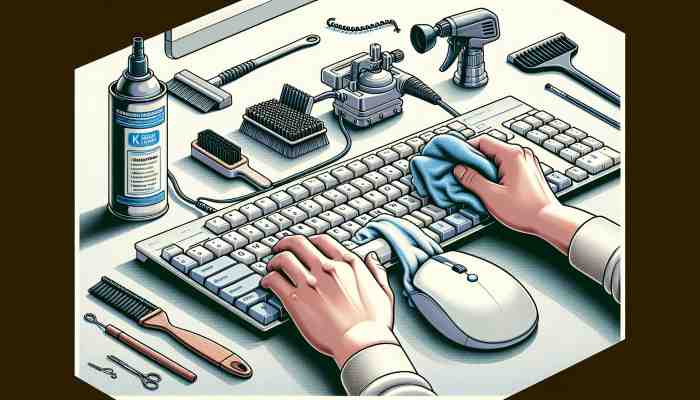# 5 Best Practices for Keyboard Maintenance
When it comes to enhancing your typing test scores and boosting your WPM, the responsiveness and condition of your keyboard can play a pivotal role. Just as a well-oiled machine performs optimally, a well-maintained keyboard can significantly uplift your typing speed and accuracy. Whether you're a data geek, a hardware aficionado, or someone keen on life hacking, understanding the nuances of keyboard maintenance can be a game-changer. Here, we dive into the five best practices to keep your keyboard in top-notch condition, ensuring every type test you take feels like a breeze.
# 1. Regular Cleaning: Your Keyboard's Best Friend
Dust and debris are the arch-nemeses of keyboard efficiency. Over time, particles can accumulate beneath the keys, leading to unresponsive or sticky keystrokes. To maintain a pristine typing surface:
- Use Compressed Air: A can of compressed air can be directed between the keys to dislodge any lurking dust.
- Wipe Down Regularly: Use a soft, slightly damp lint-free cloth to wipe the surface. For deep cleaning, cotton swabs dipped in isopropyl alcohol can be used to clean around the keys.
- Keycap Removal for Deep Cleans: For mechanical keyboards, consider removing the keycaps every few months to clean the base and keys thoroughly. Remember, this is suited for those comfortable with the anatomy of their keyboards.
# 2. Maintain a Suitable Environment
The environment where you keep your keyboard can impact its longevity and functionality. Excessive humidity can lead to corrosion and other moisture-related damages. On the other hand, a too dry environment can increase static electricity, potentially harming the keyboard’s circuitry.
- Control Humidity: Keep your typing space at a comfortable humidity level, ideally between 30% and 50%.
- Avoid Direct Sunlight: Continued exposure to direct sunlight can fade keycaps and degrade plastic components over time.
# 3. Tend to the Cable (For Wired Keyboards)
Wired keyboards come with their own set of maintenance guidelines. The lifeline of your keyboard, the cable, often gets the least attention but can be a critical failure point.
- Avoid Over-bending: Ensure the cable is not bent at sharp angles, especially near the connection points.
- Use Cable Management: Employ cable organizers to keep the wire neatly arranged and prevent tangling which can lead to internal wire damage.
# 4. Soften Your Touch
Your typing style affects your keyboard’s lifespan. Hammering down the keys not only affects your typing speed but also wears out the keyboard faster.
- Practice Gentle Typing: Aim to type gently to minimize the stress on the key mechanisms.
- Ergonomic Practices: Implement ergonomic practices like proper hand positioning and wrist support to distribute typing force more evenly across your keyboard.
# 5. Update Software Regularly (For Programmable Keyboards)
Software updates aren’t just for your computer or smartphone. Programmable keyboards can benefit from firmware updates that can enhance performance, add new features, or fix known bugs.
- Check Manufacturer’s Site Regularly: Keep an eye on the official website for any software updates.
- Custom Configure Keys: Take advantage of software to customize key responses to suit your typing habits better.
Maintaining your keyboard doesn’t just potentially increase your WPM during your next typing test; it makes every session more enjoyable and less frustrating. Cultivating these maintenance habits ensures that whether you're gaming, coding, or churning out emails, your keyboard remains reliable and responsive.
Remember, every keypress is an opportunity to improve. By keeping your keyboard in prime condition, you ensure that nothing slows down your progress. Ready to see how these tips help in real-life? Head over to TypeTest.io, take a typing test, and track how your maintenance efforts reflect on your WPM and typing speed!
